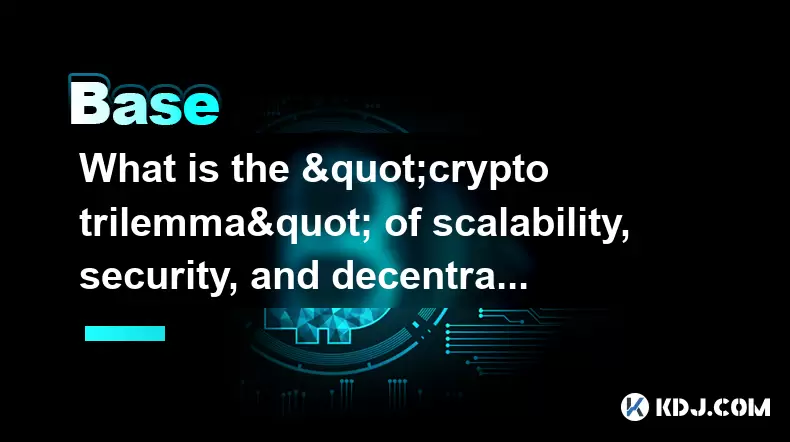-
 Bitcoin
Bitcoin $118900
1.66% -
 Ethereum
Ethereum $3735
1.35% -
 XRP
XRP $3.506
0.71% -
 Tether USDt
Tether USDt $1.000
-0.01% -
 BNB
BNB $799.4
5.78% -
 Solana
Solana $202.0
1.87% -
 USDC
USDC $0.9999
0.00% -
 Dogecoin
Dogecoin $0.2661
1.89% -
 Cardano
Cardano $0.8877
1.59% -
 TRON
TRON $0.3173
2.45% -
 Hyperliquid
Hyperliquid $45.00
2.59% -
 Stellar
Stellar $0.4723
3.40% -
 Sui
Sui $3.970
1.32% -
 Chainlink
Chainlink $19.67
1.94% -
 Hedera
Hedera $0.2710
1.99% -
 Avalanche
Avalanche $25.74
-0.01% -
 Bitcoin Cash
Bitcoin Cash $528.1
1.98% -
 Litecoin
Litecoin $120.1
3.57% -
 Shiba Inu
Shiba Inu $0.00001525
1.26% -
 UNUS SED LEO
UNUS SED LEO $8.989
-0.01% -
 Toncoin
Toncoin $3.304
1.74% -
 Polkadot
Polkadot $4.531
3.38% -
 Uniswap
Uniswap $10.74
2.51% -
 Ethena USDe
Ethena USDe $1.001
0.00% -
 Monero
Monero $325.5
2.44% -
 Pepe
Pepe $0.00001413
1.31% -
 Bitget Token
Bitget Token $4.860
0.85% -
 Dai
Dai $0.9999
0.01% -
 Aave
Aave $307.3
-2.07% -
 Bittensor
Bittensor $448.8
2.91%
What is ASIC mining machine?
ASIC mining machines are specialized hardware designed for efficient cryptocurrency mining, offering high performance but limited versatility and high initial costs.
Apr 07, 2025 at 06:28 pm

What is an ASIC Mining Machine?
An ASIC mining machine, or Application-Specific Integrated Circuit mining machine, is a specialized piece of hardware designed specifically for the purpose of mining cryptocurrencies. Unlike general-purpose computers or GPUs, ASICs are engineered to perform a single task extremely efficiently, which in this case is solving the complex mathematical problems required to validate transactions and add them to the blockchain.
How Does an ASIC Mining Machine Work?
ASIC mining machines work by executing the cryptographic hash functions that are essential for mining cryptocurrencies like Bitcoin. These machines are built to perform these hash functions at a much higher speed and with greater energy efficiency than general-purpose hardware. When a miner uses an ASIC, it attempts to solve the cryptographic puzzle by repeatedly hashing the block header until it finds a hash that meets the network's difficulty target. Once a valid hash is found, the miner can add the block to the blockchain and is rewarded with newly minted cryptocurrency and transaction fees.
Advantages of Using ASIC Mining Machines
The primary advantage of using ASIC mining machines is their superior performance and efficiency. They can perform hash operations at a rate that is orders of magnitude higher than CPUs or GPUs. This means that miners using ASICs can mine more blocks in a shorter amount of time, increasing their potential earnings. Additionally, ASICs are more energy-efficient, which can significantly reduce the operational costs of mining.
Another significant advantage is the specialized nature of ASICs. Because they are designed for a specific task, they can be optimized to perform that task better than any general-purpose hardware. This specialization leads to higher hash rates and lower power consumption per hash, making ASICs the preferred choice for serious miners.
Disadvantages of Using ASIC Mining Machines
One of the main disadvantages of ASIC mining machines is their lack of versatility. Since they are designed for a specific cryptocurrency's mining algorithm, they cannot be used for other tasks or to mine different cryptocurrencies that use different algorithms. This can be a significant drawback if the cryptocurrency being mined loses value or becomes less profitable to mine.
Another disadvantage is the high initial cost of ASICs. These machines can be quite expensive to purchase, which can be a barrier to entry for many potential miners. Additionally, the rapid pace of technological advancement in the ASIC industry means that newer, more efficient models are constantly being released, which can quickly render older models obsolete.
How to Choose the Right ASIC Mining Machine
Choosing the right ASIC mining machine involves several considerations. First, you need to determine which cryptocurrency you want to mine, as different cryptocurrencies may require different ASICs. For example, Bitcoin mining requires ASICs that are specifically designed for the SHA-256 algorithm.
Next, consider the hash rate of the ASIC. The hash rate is a measure of how many hash operations the machine can perform per second. A higher hash rate generally means more potential earnings, but it also often comes with a higher price tag and increased power consumption.
Power efficiency is another crucial factor. Look for ASICs with a lower power consumption per terahash (TH/s), as this will reduce your electricity costs and increase your overall profitability. You can calculate the efficiency by dividing the power consumption (in watts) by the hash rate (in TH/s).
Finally, consider the cost and longevity of the ASIC. While more expensive models may offer better performance, they may not be worth the investment if they become obsolete quickly. Research the manufacturer's reputation and the expected lifespan of the machine to make an informed decision.
Setting Up an ASIC Mining Machine
Setting up an ASIC mining machine involves several steps to ensure it operates efficiently and securely. Here's a detailed guide on how to set up your ASIC:
Unboxing and Inspection: Carefully unbox your ASIC and inspect it for any damage. Ensure all components, including the power supply unit (PSU), are included and in good condition.
Connecting the Power Supply: Connect the PSU to the ASIC. Make sure to use the correct cables and follow the manufacturer's instructions. Most ASICs require a dedicated PSU due to their high power consumption.
Connecting to the Internet: Use an Ethernet cable to connect the ASIC to your router or modem. A stable internet connection is crucial for mining, as the machine needs to communicate with the blockchain network.
Configuring the ASIC: Access the ASIC's interface through a web browser by entering its IP address. You can find the IP address in your router's list of connected devices. Once logged in, you'll need to configure the mining pool settings. Enter the pool URL, your username, and password provided by the mining pool.
Starting the Mining Process: After configuring the settings, start the mining process through the ASIC's interface. Monitor the machine's performance and temperature to ensure it's operating within safe limits.
Cooling and Ventilation: Ensure the ASIC is placed in a well-ventilated area to prevent overheating. Some miners use additional cooling solutions like fans or even liquid cooling systems to maintain optimal temperatures.
Monitoring and Maintenance: Regularly check the ASIC's performance and hash rate. Clean the machine periodically to prevent dust buildup, which can affect performance and cooling efficiency.
Frequently Asked Questions
Q: Can ASICs mine any cryptocurrency?
A: No, ASICs are designed for specific mining algorithms and can only mine cryptocurrencies that use those algorithms. For example, a Bitcoin ASIC can only mine cryptocurrencies that use the SHA-256 algorithm.
Q: How long does an ASIC mining machine last?
A: The lifespan of an ASIC can vary depending on usage and maintenance. On average, an ASIC can last between 1 to 3 years before it becomes less profitable due to technological advancements and increased difficulty in mining.
Q: Is it profitable to mine with an ASIC?
A: Profitability depends on several factors, including the cost of electricity, the price of the cryptocurrency being mined, and the efficiency of the ASIC. It's important to calculate your potential earnings and costs before investing in an ASIC.
Q: Can I use an ASIC for anything other than mining?
A: No, ASICs are designed for a single purpose and cannot be used for other tasks. Once they become obsolete for mining, they have no other practical use.
Disclaimer:info@kdj.com
The information provided is not trading advice. kdj.com does not assume any responsibility for any investments made based on the information provided in this article. Cryptocurrencies are highly volatile and it is highly recommended that you invest with caution after thorough research!
If you believe that the content used on this website infringes your copyright, please contact us immediately (info@kdj.com) and we will delete it promptly.
- Pudgy Penguins (PENGU) Soars: Rally Growth and Meme Coin Mania!
- 2025-07-23 19:10:12
- Solana Meme Coins & Market Cap Mania: What's the Deal?
- 2025-07-23 19:15:12
- DOGE Price Poised for Parabolic Surge? DogeOS Unveils Zero-Knowledge Game Changer!
- 2025-07-23 18:30:12
- Bitcoin ETF in Regulatory Limbo: SEC Pause Fuels Uncertainty
- 2025-07-23 18:50:12
- CZ's Altcoin Season Tease: BNB Price Rockets to New Heights!
- 2025-07-23 18:30:12
- DeFi Lending: Fees, Collateral, and the TradFi Invasion
- 2025-07-23 18:50:12
Related knowledge

What is the difference between CeFi and DeFi?
Jul 22,2025 at 12:28am
Understanding CeFi and DeFiIn the world of cryptocurrency, CeFi (Centralized Finance) and DeFi (Decentralized Finance) represent two distinct financia...

How to qualify for potential crypto airdrops?
Jul 23,2025 at 06:49am
Understanding What Crypto Airdrops AreCrypto airdrops refer to the distribution of free tokens or coins to a large number of wallet addresses, often u...

What is the difference between a sidechain and a Layer 2?
Jul 20,2025 at 11:35pm
Understanding the Concept of SidechainsA sidechain is a separate blockchain that runs parallel to the main blockchain, typically the mainnet of a cryp...

What is the Inter-Blockchain Communication Protocol (IBC)?
Jul 19,2025 at 10:43am
Understanding the Inter-Blockchain Communication Protocol (IBC)The Inter-Blockchain Communication Protocol (IBC) is a cross-chain communication protoc...

How does sharding improve scalability?
Jul 20,2025 at 01:21am
Understanding Sharding in BlockchainSharding is a database partitioning technique that is increasingly being adopted in blockchain technology to enhan...

What is the "crypto trilemma" of scalability, security, and decentralization?
Jul 19,2025 at 06:28pm
Understanding the Concept of the Crypto TrilemmaThe crypto trilemma refers to the challenge of simultaneously achieving scalability, security, and dec...

What is the difference between CeFi and DeFi?
Jul 22,2025 at 12:28am
Understanding CeFi and DeFiIn the world of cryptocurrency, CeFi (Centralized Finance) and DeFi (Decentralized Finance) represent two distinct financia...

How to qualify for potential crypto airdrops?
Jul 23,2025 at 06:49am
Understanding What Crypto Airdrops AreCrypto airdrops refer to the distribution of free tokens or coins to a large number of wallet addresses, often u...

What is the difference between a sidechain and a Layer 2?
Jul 20,2025 at 11:35pm
Understanding the Concept of SidechainsA sidechain is a separate blockchain that runs parallel to the main blockchain, typically the mainnet of a cryp...

What is the Inter-Blockchain Communication Protocol (IBC)?
Jul 19,2025 at 10:43am
Understanding the Inter-Blockchain Communication Protocol (IBC)The Inter-Blockchain Communication Protocol (IBC) is a cross-chain communication protoc...

How does sharding improve scalability?
Jul 20,2025 at 01:21am
Understanding Sharding in BlockchainSharding is a database partitioning technique that is increasingly being adopted in blockchain technology to enhan...

What is the "crypto trilemma" of scalability, security, and decentralization?
Jul 19,2025 at 06:28pm
Understanding the Concept of the Crypto TrilemmaThe crypto trilemma refers to the challenge of simultaneously achieving scalability, security, and dec...
See all articles

























































































